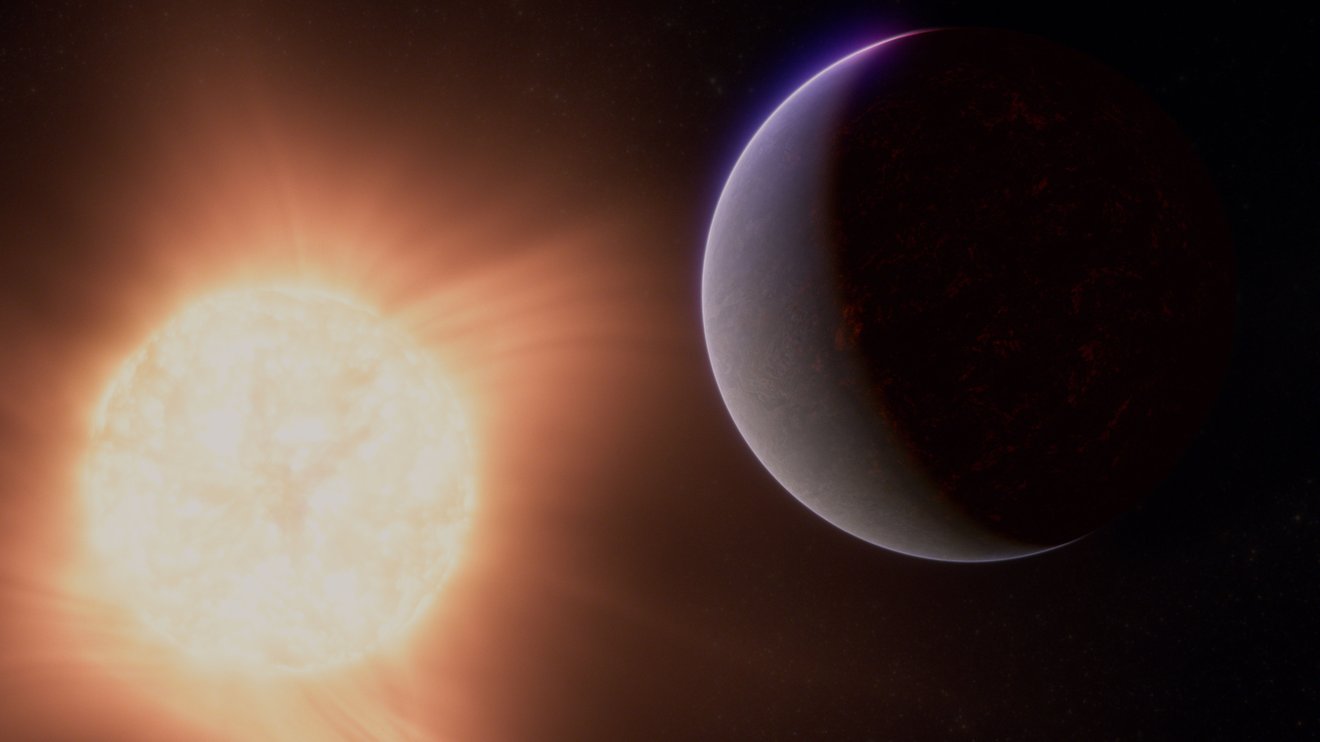
Jia Jung
Research Scientist
Branch: Biosphere Science Branch (SGE)
Education
Ph.D., 2021, Department of Earth and Atmospheric Sciences, University of Houston, Houston, TX, USA
– Thesis: A better tropospheric aerosol analysis and forecasting using data assimilation and coupled modeling
M.S., 2016, Department of Earth Environmental System, Pusan National University, Pusan, South Korea
– Thesis: A numerical study using a coupled model on cold water region and fog occurrence over the Southwest coast of the Korean Peninsula
B.S., 2014, Department of Atmospheric Sciences, Pusan National University, Pusan, South Korea
Experience
Research Scientist, NASA Ames Research Center / Bay Area Environmental Research Institute, Moffett Field, CA, USA, May 2023 – Present
Post Doctorate Research Associate, Atmospheric Sciences and Global Change, Pacific Northwest National Laboratory, Richland, WA, USA, Apr 2022 – May 2023
Post-Doctoral fellow, Department of Earth and Atmospheric Sciences, University of Houston, Houston, TX, USA, Jan – Apr, 2022
Research Assistant, Department of Earth and Atmospheric Sciences, University of Houston, Houston, TX, USA, Aug 2017 – Dec 2021
Researcher, Applied Meteorological Research Division, National Institute of Meteorological Sciences, Jeju, South Korea, Feb – Oct, 2016
Research Interests
Direct and indirect effects of aerosols with coupled modeling
Analyzing chemical evolution using data assimilation and inverse modeling techniques with in-situ and satellite column measurement at regional to global scales
Carbon cycle science with a focus on the top-down CO2 flux estimation
Analyzing the influence of global climate and weather extremes on regional scales
Select Publications
- Hagos S., Jung J., Ma PL., Lubis S., Balaguru K., Chang C., and Leung R., 2023, East Africa monsoon as a drawbridge for the circumnavigation of Madden-Julian Oscillation events, Geophysical research letter (accepted)
- Lops Y., Pouyaei A., Ghahremanloo M., Choi Y., Jung J., Salman AK., and Hammond D., 2023, Spatio-Temporal Estimation of TROPOMI NO2 Column with Depthwise Partial Convolutional Neural Network, Neural Computing and Applications (https://doi.org/10.1007/s00521-023-08558-1)
- Park J., Jung J., Choi Y., Lim H., Kim M, Lee K., Lee Y., and Kim J., 2023, Satellite-based, top-down approach for the adjustment of aerosol precursor emissions over East Asia: The Geostationary Environment Monitoring Spectrometer (GEMS) data fusion product and its proxies, Atmospheric Measurement Techniques (https://doi.org/10.5194/egusphere-2023-87)
- Momeni M., Yeganeh AK., Pouyaei A., Jung J., Park J., Shephard MW., Dammers E., Candy-Pereira KE., Choi Y., 2023, Constraining east asia ammonia emissions through satellite observations and iterative finite difference mass balance (iFDMB) and investigating its impact on inorganic fine particulate matter, SSRN Electronic Journal (http://dx.doi.org/10.2139/ssrn.4395242)
- Pan S., Gan L., Jung J., Yu W., Roy A., Diao L., Jeon W., Souri AH., Gao HO., and Choi Y., 2023 Quantifying the premature mortality and economic loss from wildfire-induced PM2.5 in the contiguous U.S, Science of the Total Environment, 875, 1, 162614 (https://doi.org/10.1016/j.scitotenv.2023.162614)
- Ghahremanloo M., Lops Y., Choi Y., Mousavinezhad S., and Jung J., 2023, A coupled deep learning model for estimating surface NO2 levels from remote sensing data: 15-year study over the Contiguous United States, Journal of geophysical research (https://doi.org/10.1029/2022JD037010)
- Pan S., Yu W., Fulton LM., Jung J., Choi Y., and Gao HO, 2022, Impacts of large-scale use of passenger electric vehicles on public health in 30 U.S. metropolitan areas, Renewable and sustainable energy reviews, volume 173, 113100 (https://doi.org/10.1016/j.rser.2022.113100)
- Mun J., Jeon W., Choi Y., Lee H., Kim C., Park S., Bak J., Jung J., Oh I., Park J., and Kim D., 2022, Assessing mass balance-based inverse modeling methods via a pseudo-observation test to constrain NOx emissions over South Korea, Atmospheric Environment (https://doi.org/10.1016/j.atmosenv.2022.119429)
- Sayeed A., Choi Y., Pouyaei A., Lops Y., Jung J., and Salman AK., 2022, CNN-based model for the spatial imputation (CMSI version 1.0) of in-situ ozone and PM2.5 measurements, Atmospheric Environment, 119348 (https://doi.org/10.1016/j.atmosenv.2022.119348)
- Park J., Jung J., Choi Y., Mousavinezhad S., and Pouyaei A., 2022, The sensitivities of ozone and PM2.5 concentrations to the satellite-derived leaf area index over East Asia and its neighboring seas in the WRF-CMAQ modeling system, Environmental Pollution, 119419 (https://doi.org/10.1016/j.envpol.2022.119419)
- Pouyaei A., Choi Y., Jung J., Mousavinezhad S., Momeni M., and Song C., 2022, Investigating the long-range transport of particulate matter in East Asia: Introducing a new Lagrangian diagnostic tool, Atmospheric Environment, 119096 (https://doi.org/10.1016/j.atmosenv.2022.119096)
- Jung J., Choi Y., Souri AH., Mousavinezhad S., Sayeed A., and Lee K., 2022, The impact of springtime- transported air pollutants on local air quality with satellite-constrained NOx emission adjustment over East Asia, Journal of Geophysical Research: Atmosphere (https://doi.org/10.1029/2021JD035251)
- Jung J., Choi Y., Mousavinezhad S., Kang D., Park J., Pouyaei A., Ghahremanloo M., Momeni M., and Kim H., 2022, Changes in ozone chemical regime over the contiguous United States inferred by the inversion of NOx and VOC emissions using satellite observation, Atmospheric Research, 106076 (https://doi.org/10.1016/j.atmosres.2022.106076)
- Ghahremanloo M., Lops Y., Choi Y., Jung J., Mousavinezhad S., and Hammond D., 2022, A comprehensive study of the COVID-19 impact on PM2.5 levels over the contiguous United States: A Deep Learning Approach, Atmospheric Environment, 118944 (https://doi.org/10.1016/j.atmosenv.2022.118944)
- Lee S., Song C., Han K., Hanze DK., Lee K., Yu J., Woo J., Jung J., Choi Y., Saide PE., and Carmichael GR., 2022, Impacts of uncertainties in emissions on aerosol data assimilation and short-term PM2.5 predictions over Northeast Asia, Atmospheric Environment, 271, 118921 (https://doi.org/10.1016/j.atmosenv.2021.118921)
- Sayeed A., Choi Y., Jung J., Lops Y., Eslami E., and Salman AK., 2021, A deep convolutional neural network model to improving WRF forecast, IEEE Transaction on Neural Networks and Learning Systems (https://doi.org/10.1109/TNNLS.2021.3100902)
- Pan S., Fulton LM., Roy A., Jung J., Choi Y., and Gao HO., 2021, Shared use of electric autonomous vehicles: Air quality and health impacts of future mobility in the United States, Renewable and Sustainable Energy Reviews, 149, 111380 (https://doi.org/10.1016/j.rser.2021.111380)
- Lops Y., Pouyaei A, Choi Y, Jung J., Salman AK., and Sayeed A., 2021, Application of a Partial Convolutional Neural Network for Estimating Geostationary Aerosol Optional Depth Data, Geophysical Research Letters (https://doi.org/10.1029/2021GL093096)
- Pouyaei A., Sadeghi B., Choi Y., Jung J., Souri AH., Zhao C., and Song C., 2021, Development and implementation of a physics-based convective mixing scheme in CMAQ modeling framework, Journal of Advances in Modeling Earth Systems (https://doi.org/10.1029/2021MS002475)
- Sayeed A., Lops Y., Choi Y., Jung J., and Salman AK., 2021, Bias Correcting and Extending the PM forecast by CMAQ up to 7 days using Deep Convolutional Neural Networks, Atmospheric Environment, 118376, (https://doi.org/10.1016/j.atmosenv.2021.118376)
- Sayeed A., Choi Y., Eslami E., Jung J., Lops Y., Salman A., Lee J., Park H., and Choi M., 2021, A Novel CMAQ-CNN Hybrid Model to Forecast Hourly Surface-Ozone Concentrations Fourteen Days in Advance, Scientific Reports (https://doi.org/10.1038/s41598-021-90446-6)
- Jung J, Choi Y., Wong DC., Nelson D., and Lee S., 2021, Role of sea fog over the Yellow Sea on air quality with the direct effect of aerosols, Journal of Geophysical Research: Atmosphere, 126 (https://doi.org/10.1029/2020JD033498)
- Pan S., Jung J., Li Z., Hou X., Roy A., Choi Y., and Gao HO., 2020, Air Quality Implications of COVID-19 in California, Sustainability, 12, 7067 (https://doi.org/10.3390/su12177067)
- Souri AH., Choi Y., Kodros JK., Jung J., Shpund K., Pierce JR., Lynn BH., Khain A. and Chance K., 2020, Response of Hurricane Harvey’s Rainfall to Anthropogenic Aerosols: A Sensitivity Study Based on Spectral Bin Microphysics with Simulated Aerosols, Atmospheric Research, 104965. (https://doi.org/10.1016/j.atmosres.2020.104965)
- Pouyaei A., Choi Y., Jung J., Sadeghi B., and Song C., 2020, Concentration Trajectory Route of Air pollution with an Integrated Lagrangian model (C-TRAIL model v1.0) derived from the Community Multiscale Air Quality Modeling (CMAQ model v5.2), Geoscientific Model Development (https://doi.org/10.5194/gmd-2019-366)
- Sayeed A., Choi Y., Eslami E., Lops Y., Roy A., and Jung J., 2020, Using a deep convolutional neural network to predict 2017 ozone concentrations, 24 hours in advance learning systems, Neural Networks, 121, 396-408. (https://doi.org/10.1016/j.neunet.2019.09.033)
- Yoo J., Jeon W., Park S., Park C., Jung J., Lee S., and Lee H., 2019, Investigating the regional difference of aerosol feedback effects over South Korea using WRF-CMAQ two-way coupled modeling system, Atmospheric Environment, 218, 116968 (https://doi.org/10.1016/j.atmosenv.2019.116968)
- Jung J., Souri AH., Wong DC., Lee S., Jeon W., Kim J. and Choi Y., 2019, The impact of the direct effect of aerosols on meteorology and air quality using aerosol optical depth assimilation during the KORUS-AQ campaign, Journal of Geophysical Research: Atmosphere, 124(14) (http://doi.org/10.1029/2019JD030641)
- Prasanna V., Choi H., Jung J., Lee Y, and Kim B., 2018, High-resolution wind simulation over Incheon international airport with the unified model’s rose nesting suite from KMA operational forecasts, Asia-Pacific Journal of Atmospheric Sciences, 54(2), 1-17 (https://doi.org/10.1007/s13143-018-0003-5)
- Jung J., Lee H., Jeon W., Kim D., Kim H., and Kang Y., 2015, A Study on Effect of Improvement Plan for Wind Energy Forecasting, Journal of Korean Society for Atmospheric Environment, 31, 1~14 (https://doi.org/10.5572/KOSAE.2015.31.1.001 in Korean)




























